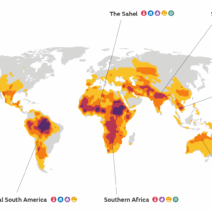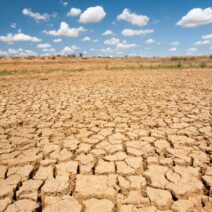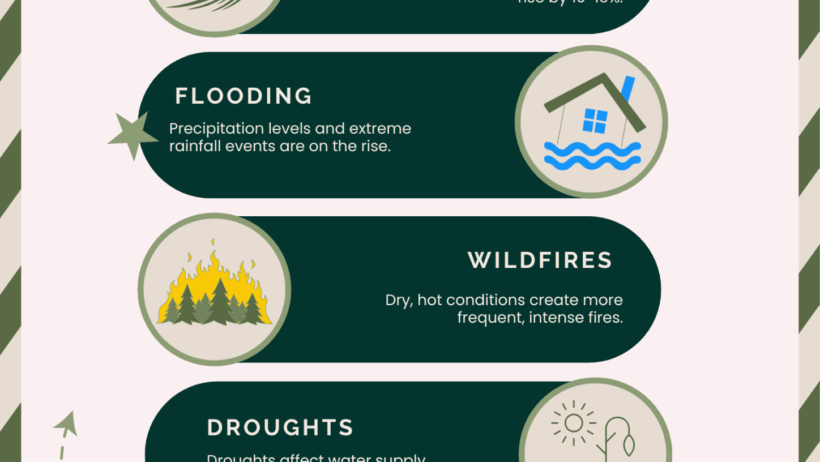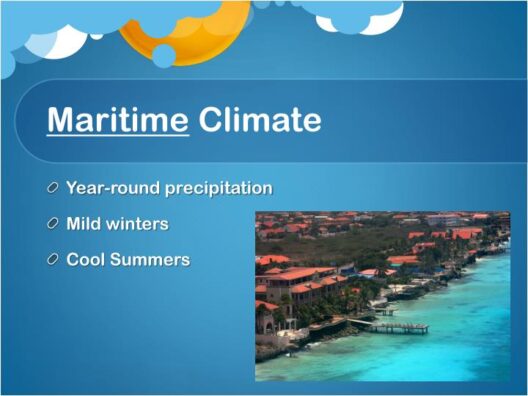As Canada finds itself at a critical juncture in the wake of global warming, one must ponder: can the nation balance economic growth with ecological preservation? This inquiry becomes increasingly significant as climate change continues to reshape the landscape of the Canadian economy. The repercussions range from transforming traditional industries to fostering new economic opportunities, all while navigating the perilous waters of environmental sustainability.
To understand Canada’s climate crossroads, one must acknowledge its reliance on natural resources. The nation’s vast expanses of forests, water bodies, and mineral wealth form the backbone of its economy. However, these resources are also acutely susceptible to the fluctuating climate. For instance, the forestry sector, long considered a stalwart of Canadian industry, is now contending with heightened risks from pests, fires, and changing weather patterns. The infestation of bark beetles, exacerbated by rising temperatures, leads to deforestation, which in turn diminishes both biodiversity and timber supply. The loss of such resources sends shockwaves through the economy, raising concerns about job security and the future viability of entire communities.
Moreover, the agricultural sector finds itself ensnared in a complex web of climate variables. While warmer temperatures may extend growing seasons in certain regions, they simultaneously heighten the potential for droughts and floods. Farmers must adapt to these unpredictable conditions, which often requires significant investments in technology and infrastructure. The transition to climate-resilient practices is not merely an option; it is a necessity that could redefine agricultural productivity and food security across the nation.
One intriguing consequence of global warming is its impact on the fishing industry. As ocean temperatures rise and ice cover diminishes, fish habitats undergo profound changes. Species traditionally found in colder waters may migrate northward, altering fishing patterns and jeopardizing traditional livelihoods. The fishing communities, reliant on age-old practices, are now faced with challenges that compel them to innovate or falter. This may also catalyze competition for new fishing grounds, raising questions about the sustainability of marine ecosystems and the rights of indigenous populations.
Canada’s energy landscape is also undergoing a seismic shift. The nation is one of the world’s largest producers of oil and gas, primarily extracted from the oil sands of Alberta. However, as global pressure mounts to transition away from fossil fuels, the Canadian economy must recalibrate. The government has signaled its intention to reduce carbon emissions, yet the road to achieving this goal is fraught with challenges. How does a nation steeped in fossil fuel reliance pivot to embrace renewable energy sources without compromising economic stability? This dilemma poses a significant question for policymakers and industry leaders alike.
Renewable energy sources, such as hydropower, wind, and solar, offer a glimmer of hope. Canada is already a leader in hydropower generation, providing a substantial portion of its electricity. However, the expansion of these renewable sectors demands investment, innovation, and public acceptance. The transition towards cleaner energy is not merely about replacing one resource with another; it’s a comprehensive transformation that encompasses infrastructure, technology, and workforce development. The challenge lies in mobilizing the will and the resources to make this transition equitable and effective.
As Canada grapples with these multifaceted challenges, it is also presented with a unique opportunity for economic revitalization. The burgeoning green technology sector holds the promise of job creation and innovation. By investing in sustainable technologies, Canada can position itself as a leader in the global green economy. Imagine a future where the nation becomes synonymous with eco-friendly innovation, attracting investment and talent from around the globe. This vision, while optimistic, rests on the premise of commitment and foresight.
The interaction between climate change and economy is further complicated by social dynamics. Marginalized communities often bear the brunt of environmental degradation and economic instability. Addressing these disparities requires nuanced approaches that integrate social justice with climate action. Policy frameworks must prioritize inclusivity, ensuring that all Canadians have a stake in the green transition. The challenge extends beyond mere economic metrics; it encompasses a moral obligation to foster an equitable society amidst shifting environmental paradigms.
Engagement and education serve as crucial tools in navigating this climate crossroads. The Canadian populace must be informed and involved in discussions surrounding climate policies. Community-driven initiatives and grassroots movements can serve as catalysts for change, empowering citizens to advocate for sustainable practices and policies. This participatory approach fosters a sense of collective responsibility, crucial for tackling the epochal challenges posed by climate change.
In summation, Canada’s climate crossroads is a complex intersection of economic, ecological, and social considerations. As global warming continues to reshape its economy, the nation stands at a pivotal moment, where the choices made today will reverberate for generations to come. Can Canada define a new paradigm that harmonizes economic growth with environmental stewardship? The answer lies in the collective ambition and actions of its people, businesses, and governments. The future is uncertain, yet filled with potential. Only through concerted effort and innovative thinking can Canada navigate its climate crossroads and emerge resilient in the face of change.








